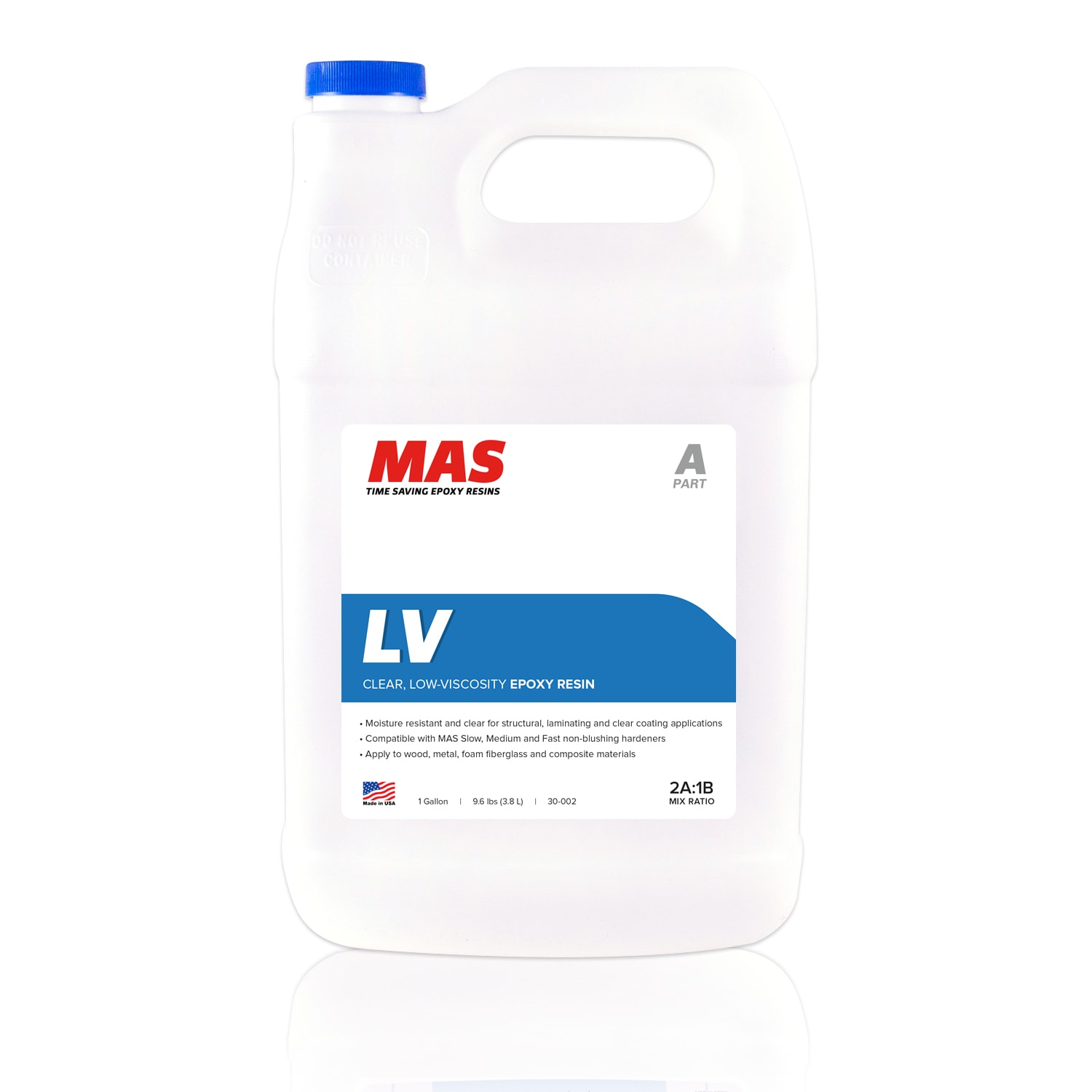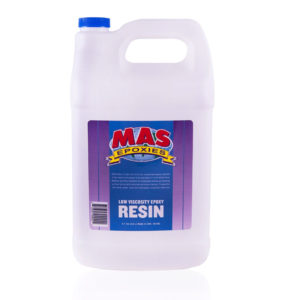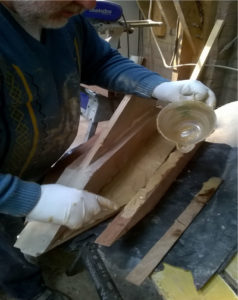Which Epoxy Resin to Use Low Vis or FLAG?
Posted on

When you have decided that the system you will use is the MAS non blushing system many people then ask us what resin should we use. So here are a few pointers.
Both Low vis and FLAG are part of the MAS non blushing no wax epoxy system. They are a 2 part system mixing 2 parts rein to 1 part hardener by weight or volume. The hardeners are slow medium and fast.
Both resins offer a low odor clear finish non blushing /waxing epoxy system that we have found to be very simple to use, giving predictable excelent results time after time. The low vis and flag systems are castor oil based which means they have a great flow out and should you get any on your skin it does not burn and the problems with over expossure which has plagued many of the older systems is simply not there in simple terms the sencertising effect of the older epoxies does not seem to be an issue with people using the low odor, non blushing epoxy system from MAS epoxies.
Both our resins and all our three hardeners can be measured out in any one of three ways , but you must make sure you use the same methode for both resin and hardener and keep to the 2 parts resin and 1 part hardener ratio.
In the workshop we use all 3 methods depending on the job at hand
- Pumps, We use pumps for small mixes and small one off jobs. (remember our pumps are precalibrated blue for resin red for hardener, one pump of each will give you the correct 2 parts rein to 1 part hardener ratio.
- Scales for larger jobs wher we might have two or three people mixing or just a large area and we want the mix to be as accurate as possible through out the work, we use digital scales which we cover with cling film to keep the scales readable and useable. Our most popular mixes are 200 grames to 100 grames and occationally 400 grames to 200 grames these seem to be good ammounts we can use without the pot life running out.
- Measured beaker or jug. We tend to use this system on large areas where we have a number of opperators working on the project or one person who can work quickly over a large area. We normally mix 2 litres of resin to 1 litre of hardener. We normally use the slow hardener for these mixes.
- You can use the non blushing low odor epoxy anywhere you would have used the older type epoxies but with more ease of use and a quicker job.
LOW VIS Epoxy Resin
 So what is low vis. Low vis is short for low viscosity which means it is thinner than the flag resin it will flow easier and soak into cloth and substrates.a big advantange over the older type resins which unless they were worked and forced into the substrate matterial, would just sit on the top like a patch.
So what is low vis. Low vis is short for low viscosity which means it is thinner than the flag resin it will flow easier and soak into cloth and substrates.a big advantange over the older type resins which unless they were worked and forced into the substrate matterial, would just sit on the top like a patch.
The flow or viscosity of liquides is measured in centipoise (cp) so water has a Cp of 1 and molases a Cp of 10,000 so our Low vis resin is thinner than most on the market.
What are the advantages of using a Low vis resin system
When coating you will get an easier flow and a deeper penertration into the substrate. We recommend all porrouse substrates be coated with Low Vis resin and hardener mix. When using cloth , carbon fibre you get a full impregnation through the matterial with a minimum of work and less voids. Low Vis can be easily injected into voids and cavitities and is ideal when using vacum bagging but remember to add our part three unit for vacum bagging which will prevent the start of chemical reaction until the whole job is wet out.
We also use Low Vis resin with fast hardener when making epoxy foam. You can always thicken Low Vis by adding powders to the mix should you need to. For perfect easy varnish clean the wood back and sand with a 120 grit paper, coat with one or two coats of low vis , this will seal the wood. When curred cut with a light sand paper to send the surface into a grey opaque state then coat with one coat of your favorite varnish, you will be impressed.
FLAG resin
Flag stands for filleting laminating and gluing. It is a thicker resin than low vis and has added disolved fibres that mean you do not have to add so much powder when you come to make up slurries and filleting blends for gluing and tabbing. You can use Flag simply with its hardener to glue up and laminate.
Where we use Flag within the workshop
- Stright forward gluing and gluing with thickening agents such as workshop mix.
- As a fairing compound when used with any of our powders and medium or fast hardener Flag makes a great fairing compound on verticle and horizontal surfaces and because of its in built anti slump agents gets to a gel evenly and quickly.
- As a barrier coat, when we are coating up and we are going on to of a substrate that has either been treated with low vis or on top of a clothed project we use flag to build up the thickness of the barrier coat evenly and quickly ( a workshop tip, bothlow vis and flag can be mixed together so if you have some low vis left you can addd flag with its hardener to it to complete your job , or in our case we cut flag and low vis together to get a mixture that we like to use in our build up of barrier coats.
- Flag also makes a great molding matterial when we need to repair broken furniture etc.
Flag has a Cp of 2300 but remember all these figures change the warmer the resin is.

So flag can be used for
F faring , add powders such as workshop mix glass balls cab o sil etc
L laminating use on its own with relivent hardeners or add powders to achieve peanut butter and
kettchup thicknesses
A and vertually any thing else you can think of from barrier coating to bonding hardware
G gluing on its own with hardeners and addtertives.
